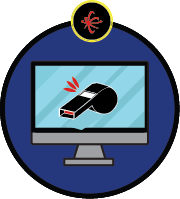You’ve probably heard the news. The College Board has officially announced that the SAT is going digital. Its time has come!
Maybe you think the SAT has been dragged kicking and screaming into the digital age, or it’s a timely change. It’s highly likely too, that all those darn lock downs and covid measures factored into the change. Whatever the reason, honestly, it doesn’t matter. Now that it’s happened, let’s look at those changes, how they affect you and your chances at college.
A brief timeline
In 2021: the SAT already scrapped their optional essay except for some states on SAT School Days. So that, my friends, has already been mostly off the table for a number of months. But what about the other changes?
November 2021: saw the successful digital testing platform trialled for the SAT. It’s now going to be rolled out internationally, from 2023, and for US candidates from 2024.
From mid- 2022: about 80% of institutions that offer bachelor’s degrees will allow optional inclusion of test results to complete your application. Top tip: They are not disallowing those results, so, if your tests results are favorable, you have an opportunity to add value to your application!
From 2023: international students will test using the digital testing platform
From 2024: the SAT will be administered solely as a digital test for everyone regardless of location.
The practical differences
The process is easier
What the College Board is saying is that the SAT will be “easier to take, easier to give, and more relevant.” The specifics have not been spelled out as to the improved relevance. But, I’ll take a couple of guesses. It stands to reason that relevance is gained by a change to digital delivery because it simplifies a very laborious process and makes the test easier to administer and mark… and certainly those things will happen much quicker. They could be saying that some of the questions may be more related to high school curriculum. Being a standardized test based on critical thinking, it’s really not necessary to relate it to specific curriculum, but we can see how that might appear more favorable.
Easier? Why?
If a test is designed to be standardized across all takers, then it shouldn’t matter if it’s easy or hard. It’s precisely why standardized tests are … um … standardized. Your scores will be distributed across the results curve. Results from easier tests are still distributed in the same way.
And just as an aside, why does it matter if a test is hard? An interesting note: The CLT is now widely considered to be a testing platform that appropriately challenges their students. Their enrollments have skyrocketed over the last 2 years. Interestingly, the CLT is already 2 hours long and digital. College Prep Genius is the official test prep for the CLT.
Inequity?
There’s been a lot of press regarding the contentious issue of fairness of the SAT and other testing instruments. The results show there is some inequity in the education system, but some of the widely held beliefs about who does best, are biases that are easily explained or dismissed.
One of those is that rich white kids do better. It is true is that the more financial resources a family has, the more likely they are going to take opportunities. Most college prep courses do cost money, but remember, some are indeed free. More importantly, the cost of a program does not determine the effectiveness of the course. College Prep Genius (my course) is one of the most cost-effective programs in the country and is arguably affordable by most families. But don’t be fooled. A more expensive program doesn’t give more advantage and it doesn’t guarantee better results. In my blog, “Cause or Correlation— What’s Really Unfair About the SAT “, I illustrated my point with a couple case studies that showed a relative Return on Investment looking at the dollars and hours spent and comparing that to the dollars gained in scholarship or desired placement.
More equal than you think
It's sobering to know that there are many privileged wealthy students who bomb the SAT-type tests. And many students from assorted (socio-economic and demographic) minority groups outperform their wealthier cohorts.
Motivation, drive, application and the test-taking skill set play a far bigger part in your success than mere money or ‘status.’
Surprising stats
Most students know the power of submitting their SAT scores, even when applications are increasingly test-optional (i.e., you can choose to submit your scores… or not). Generally, there are currently about 2.2 million students eligible to take the SAT annually. For example, in 2020, about 1.7 million of those had SAT scores that reflected or exceeded their high school GPA. For those people who think that demographics and sociographics compromise your ability to do well, consider that of those 1,700,000 students:
It’s really important to get granular and not take commonly-held beliefs about the SAT—or anything else—as gospel.
Still, UC decided not to consider scores in the application process. Yet, they do not overrule including their own standardized testing in the future. It seems they must value results of standardized testing, after all.
Take-away
My advice? Whatever happens, learn how to beat standardized tests anyway. Clearly, if you choose to include your scores in any application, a college-entrance arbiter cannot unsee your scores and they cannot be un-influenced by them. Besides, you’ll learn important critical thinking skills that are useful at all stages of life, regardless of your chosen career or life choices.






